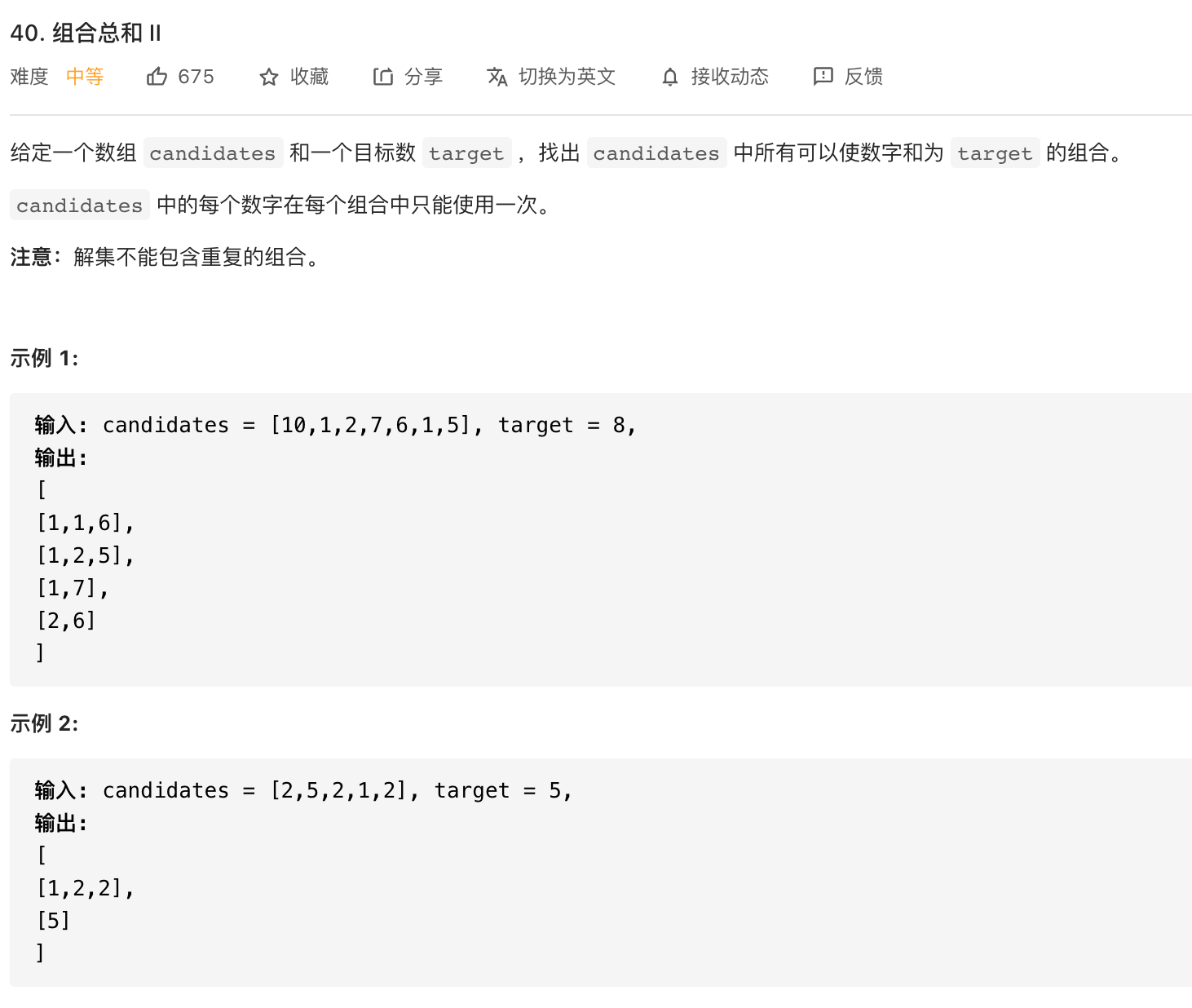题目
类型:回溯
难度:中等

解题思路
使用递归 + 回溯
与第 39 题(组合之和)的差别在于这题每个数字在每个组合中只能使用一次,相同点是相同数字列表的不同排列视为一个结果。
由上述分析可以得出,如何去重是重点
两种方法,一种是使用哈希表,这种方法比较复杂。第二种方法就用和39题一样的思路,我们先排序,在搜索的过程中检测分支是不是有重复结果。

代码
package backtracking;import java.util.*;public class CombinationSumII {public List<List<Integer>> combinationSum2(int[] candidates, int target) {int len = candidates.length;List<List<Integer>> res = new ArrayList<>();if (len == 0) {return res;}// 关键步骤Arrays.sort(candidates);Deque<Integer> path = new ArrayDeque<>(len);dfs(candidates, len, 0, target, path, res);return res;}/*** @param candidates 候选数组* @param len 冗余变量* @param begin 从候选数组的 begin 位置开始搜索* @param target 表示剩余,这个值一开始等于 target,基于题目中说明的"所有数字(包括目标数)都是正整数"这个条件* @param path 从根结点到叶子结点的路径* @param res*/private void dfs(int[] candidates, int len, int begin, int target, Deque<Integer> path, List<List<Integer>> res) {if (target == 0) {res.add(new ArrayList<>(path));return;}for (int i = begin; i < len; i++) {// 大剪枝:减去 candidates[i] 小于 0,减去后面的 candidates[i + 1]、candidates[i + 2] 肯定也小于 0,因此用 breakif (target - candidates[i] < 0) {break;}// 小剪枝:同一层相同数值的结点,从第 2 个开始,候选数更少,结果一定发生重复,因此跳过,用 continueif (i > begin && candidates[i] == candidates[i - 1]) {continue;}path.addLast(candidates[i]);// 调试语句 ①// System.out.println("递归之前 => " + path + ",剩余 = " + (target - candidates[i]));// 因为元素不可以重复使用,这里递归传递下去的是 i + 1 而不是 idfs(candidates, len, i + 1, target - candidates[i], path, res);path.removeLast();// 调试语句 ②// System.out.println("递归之后 => " + path + ",剩余 = " + (target - candidates[i]));}}}

